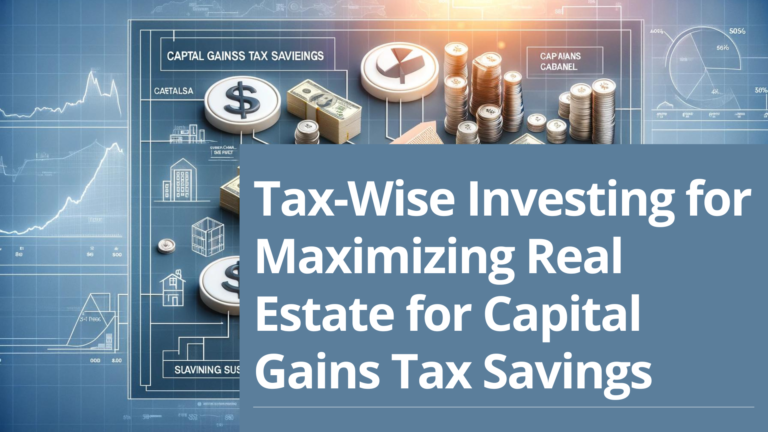When we think about building wealth, one of the most robust paths chosen by savvy investors across the globe is multi-family real estate investment. This type of investment has emerged as a beacon for those looking not just to grow but also to diversify their investment portfolio in meaningful ways. The allure of investing in apartment buildings and other multi-family properties lies in their potential to offer steady cash flow, significant tax advantages, and scalability. For beginners, navigating the realm of real estate investments can seem daunting. However, with smart investment strategies, the journey can lead to unparalleled financial success and stability.
The essence of making informed decisions in multi-family real estate investment hinges on understanding the market, the financial nuances, and the strategies that can maximize returns. This complete guide aims to demystify the process, presenting you with a roadmap to investing in multi-family real estate that is both enriching and rewarding.
Tit Bits: Did you know? Multi-family properties often offer a lower vacancy risk compared to single-family units due to multiple units generating income.
Understanding the Multi-Family Real Estate Market

The Appeal of Multi-Family Properties
Multi-family real estate investment stands out as a preferred option for many investors due to its ability to establish multiple streams of income from a single property. Unlike single-family investments, where income relies on one tenant, multi-family properties diversify your risk across several units. This fundamental difference not only stabilizes your income stream but also increases the potential for higher returns. Furthermore, multi-family properties are scalable, allowing investors to own more units under one roof, which streamlines management and maintenance efforts.
Latest Trends and Market Dynamics
The current landscape of the multi-family real estate market is shaped by a variety of factors, including demographic shifts, urbanization, and changing housing preferences. An increasing number of individuals are opting for rental housing in urban and suburban areas, driven by the desire for flexibility and the high cost of homeownership. This trend underscores the growing demand for multi-family properties, presenting a ripe opportunity for investors.
Understanding how these dynamics influence investment decisions is crucial. For instance, areas with growing employment opportunities, educational institutions, and amenities tend to attract more tenants, thus ensuring high occupancy rates and stable rental income.
Identifying Opportunities in the Multi-Family Market
Spotting lucrative investment opportunities in the multi-family market requires a keen eye for detail and a deep understanding of market indicators. Key factors such as location, property condition, occupancy rates, and potential for rent growth play a pivotal role in investment success. Properties in emerging neighborhoods or close to economic hubs can offer significant upside potential.
Elevate your real estate decisions! Get started with our expert team here and enhance your knowledge of Common Seller Mistakes to avoid.
Financial Planning for Multi-Family Real Estate Investments

Fundamentals of Financing Multi-Family Properties
Financing is a cornerstone of any real estate investment, and multi-family properties are no exception. Investors have a variety of financing options at their disposal, each with its own set of advantages and considerations.
- Banks and financial institutions offer Traditional Loans; these loans are commonly used for multi-family property investments. They typically require a down payment of 20-25% and have strict credit score and income verification requirements.
- FHA Loans, or the Federal Housing Administration, offers loans that allow for lower down payments and are more accessible to first-time investors. However, they come with specific regulations and limits.
- Private financing includes funds from private lenders or investment groups and can offer more flexibility in terms of loans and qualifications. However, interest rates may be higher compared to traditional financing.
Table 1: Comparison of Financing Options for Multi-Family Properties
| Financing Type | Down Payment | Interest Rate | Requirements |
| Traditional Loan | 20-25% | Low to Moderate | High credit score, income verification |
| FHA Loan | As low as 3.5% | Moderate | FHA guidelines, occupancy requirements |
| Private Financing | Variable | High | Flexible, subject to lender’s terms |
Analyzing Cash Flow and Returns
The financial viability of a multi-family real estate investment hinges on its ability to generate positive cash flow and attractive returns. Here are key concepts to understand:
- Cash Flow: The net income generated from the property after all expenses (mortgage, maintenance, taxes, etc.) are paid. Positive cash flow indicates that the property is generating more income than expenses.
- Net Operating Income (NOI): This is the total income from the property minus operating expenses. It does not include mortgage payments and capital expenditures.
- Capitalization Rate (Cap Rate): A measure used to evaluate the return on an investment property, calculated by dividing the NOI by the property’s current market value.
Table 2: Calculating Returns on Multi-Family Investment
| Metric | Formula | Example Calculation |
| Cash Flow | Rental Income – Expenses | $5,000 – $3,000 = $2,000/month |
| NOI | Rental Income – Operating Expenses | $60,000 – $20,000 = $40,000/year |
| Cap Rate | NOI / Property Value | $40,000 / $800,000 = 5% |
Tax Benefits and Implications
Investing in apartment buildings and other multi-family units offers significant tax advantages, which can greatly enhance the overall returns on your investment. Key tax benefits include:
- Depreciation: This allows investors to deduct a slice of the property’s cost over its useful life, providing a valuable tax shield.
- Interest Deduction: Interest paid on loans used to purchase or improve the property can be deducted, lowering taxable income.
- 1031 Exchange: Investors can defer capital gains taxes by reinvesting the proceeds from the sale of an investment property into another property.
Navigating the complexities of real estate taxation requires a solid understanding of the tax code and, often, the guidance of a tax professional.
Maximizing Returns when Investing in Multi-Family Real Estate

Effective Property Management Strategies
The profitability of a multi-family real estate investment significantly hinges on effective property management. Good management practices not only ensure a steady income stream through high occupancy rates but also maintain and potentially increase the property’s value over time. Investors are faced with a choice: self-management or hiring a property management company.
Self-management allows investors to save on management fees and maintain closer control over their property. It requires a significant time investment and a good understanding of the rental market, tenant relations, and maintenance issues.
On the other hand, hiring a property management company can relieve the day-to-day responsibilities of property management. These companies bring expertise in market rent analysis, tenant screening, maintenance, and legal compliance, potentially increasing the property’s profitability and lifespan.
Table 3: Self-Management vs. Hiring a Property Management Company
| Aspect | Self-Management | Property Management Company |
| Control | High – direct involvement in all decisions | Lower – company makes daily decisions |
| Costs | Lower – no management fees | Higher – management fees apply |
| Expertise | Depends on the investor’s knowledge | High – professional management and legal compliance |
| Time Investment | High – significant personal time required | Low – company handles day-to-day operations |
Renovation and Value-Add Opportunities
Identifying and capitalizing on value-add opportunities is a powerful strategy to increase the returns on multi-family real estate investment. Renovations and upgrades can enhance the property’s appeal, allowing for higher rents, increased occupancy rates, and a higher property value.
Key areas for value-add renovations include:
- Unit Upgrades: Improvements such as modern appliances, updated fixtures, and refreshed interiors can significantly increase rental appeal.
- Common Area Enhancements: Upgrading amenities like the lobby, outdoor spaces, and fitness centers can enhance the overall living experience and justify higher rents.
- Operational Improvements: Implementing cost-saving measures in maintenance and utilities can increase the net operating income (NOI).
Budgeting for Renovations is crucial to ensure a good return on investment (ROI). Investors should carefully analyze the potential rent increase and property value uplift against the cost of renovations.
Table 4: Renovation Budgeting and Expected ROI
| Renovation Type | Estimated Cost | Expected Rent Increase | ROI Calculation |
| Unit Upgrades | $10,000/unit | $200/month | ($200 * 12) / $10,000 = 24% annual ROI |
| Common Area Enhancements | $50,000 | $50/month/unit (100 units) | ($50 * 12 * 100) / $50,000 = 120% annual ROI |
| Operational Improvements | $20,000 | – | Reduction in operating expenses increases NOI directly. |
By implementing effective property management strategies and identifying value-add opportunities, investors can maximize the returns on their multi-family real estate investments. These strategies not only improve the property’s profitability but also contribute to building a sustainable and scalable real estate portfolio.
Strategies for Successful Multi-Family Property Investments

Market Research and Due Diligence
Conducting thorough market research and due diligence is indispensable for those embarking on the journey of multi-family real estate investment. These initial steps lay the groundwork for identifying promising investment opportunities and mitigating risks.
Market Research involves analyzing local and regional real estate trends, including rental demand, average occupancy rates, and potential for appreciation. This research should focus on identifying areas with strong economic indicators, such as job growth, infrastructure development, and population trends. Tools like real estate databases, local government reports, and professional market analyses can provide valuable insights.
Due diligence is the process of verifying the information about a potential investment. This includes reviewing financial records, inspecting the property, and ensuring accordance with zoning and building codes. Due diligence helps uncover any potential issues that could affect the investment’s profitability or viability.
Building and Leveraging Professional Networks
Building and leveraging professional networks can significantly influence success in the realm of multi-family real estate investment. Relationships with real estate agents, brokers, lenders, property managers, and fellow investors can provide access to valuable information, resources, and opportunities that are not available to the general public.
Real Estate Networks serve as a conduit for finding off-market deals, securing better financing terms, and gaining insights into local market dynamics. Attending real estate investment meetings, seminars, and conferences can be an effective way to connect with industry professionals and like-minded investors.
Leveraging Relationships involves actively engaging with your network to share knowledge, opportunities, and resources. Collaboration can lead to partnerships, co-investment opportunities, and referrals to trusted service providers.
By mastering market research, due diligence, and the art of networking, investors can position themselves for success in the competitive field of multi-family real estate investment. These strategies help not only identify and secure profitable investments but also navigate the complexities of the real estate market with greater confidence and insight.
Learn the significance of hiring a specialized real estate agent. Visit our About Us Page for our professional background and explore the benefits in our blog, The Benefit of Hiring a Seniors Real Estate Specialist to Sell Your Home.
Diversifying Your Real Estate Portfolio with Multi-Family Properties
The Role of Multi-Family Investments in Portfolio Diversification
Diversification is a fundamental investment principle aimed at reducing risk by extending investments across different asset types or market sectors. In the context of real estate investment, incorporating multi-family properties into your portfolio can significantly enhance diversification and, consequently, risk management.
Multi-family real estate investment stands out for its resilience to economic fluctuations. These properties often maintain steady occupancy rates due to the continuous demand for housing, providing a more stable income stream compared to other types of real estate investments. Moreover, the ability to own multiple units within a single property offers a unique advantage in spreading risk; even if one unit is vacant, the income from other occupied units can help cover expenses and mortgage payments.
How Multi-Family Properties Can Mitigate Risk
The concept of risk mitigation in real estate investment revolves around strategies to minimize potential losses and volatility. Multi-family properties inherently possess qualities that contribute to risk mitigation:
- Managing multiple units in a single location can be more cost-effective than managing the same number of single-family homes spread across different locations. This efficiency can lead to lower expenses per unit and increased profitability.
- The availability of various financing options for multi-family properties, including government-backed loans, can provide investors with flexibility in optimizing their investment’s capital structure.
- Multi-family properties offer the potential for adaptive use, such as converting rental models or updating units to cater to changing market demands. This adaptability enhances the property’s resilience to market changes.
Incorporating multi-family properties into your investment strategy can diversify your real estate portfolio and provide a solid foundation for wealth building. The ability to mitigate risk while capitalizing on the growth and stability of these investments makes them a key asset class for both novice and experienced investors.
Risk Management in Multi-Family Real Estate Investments

Identifying and Mitigating Investment Risks
Investing in multi-family real estate is not without its challenges and risks. Understanding these risks and employing strategies to mitigate them is crucial for the long-term success of your investment. Key risks include market risk, financial risk, operational risk, and tenant-related risk.
Market Risk:
Changes in the economy, interest rates, and the real estate market can impact property values and rental income. Conducting comprehensive market research and choosing properties in resilient and growing markets can help mitigate this risk.
Financial Risk:
This involves the risk associated with the financing of the property, including the terms of the loan and interest rate fluctuations. Securing fixed-rate mortgages and maintaining a healthy cash reserve can provide a buffer against financial instability.
Operational Risk:
These are risks related to the day-to-day operation of the property, including maintenance issues and unexpected expenses. Implementing a proactive maintenance schedule and budgeting for unforeseen costs are effective risk management strategies.
Tenant-Related Risk:
Tenant turnover, non-payment of rent, and damage to the property can affect your investment’s profitability. Thorough tenant screening processes, maintaining good tenant relations, and having a clear lease agreement can minimize these risks.
Building Sustainable Wealth with Multi-Family Real Estate
In conclusion, multi-family real estate investment offers a compelling avenue for building wealth through smart strategies and diligent management. The journey to successful real estate investing involves understanding the market, financial planning, maximizing returns through effective management, and employing strategic risk management techniques.
The insights and strategies outlined in this guide serve as a foundation for both novice and experienced investors to navigate the complexities of the multi-family real estate market. By leveraging these principles, you can build a diversified, resilient, and profitable real estate portfolio.
Embark on your investment journey with confidence. Learn how to navigate senior real estate challenges. Click here for our comprehensive services and enrich your knowledge with our Significant Obstacles Senior Adults Face When Moving blog.
Explore the opportunities that multi-family real estate investment presents and take the first step towards building sustainable wealth. Remember, the path to triumph is paved with informed decisions, strategic planning, and continuous learning.




